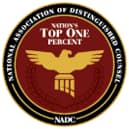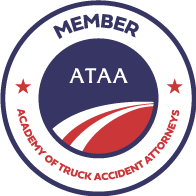An Overview of California Motorcycle Laws

All motorists are required to abide by general traffic laws like those pertaining to speed limits and stopping at red lights, for instance. For motorcycle riders, however, there are some additional laws that apply to them in California, and understanding these laws can be essential to staying safe and avoiding tickets and crashes.
California Motorcycle Laws: Lane Splitting
Lane splitting – also referred to as filtering, white-lining or lane sharing – refers to the practice or riding between lanes of slower moving traffic to pass it. Lane splitting IS legal in California as long as it is done in a “safe and prudent manner.”1 And here are a few general guidelines for safely and legally splitting lanes on motorcycles in California:
- Avoid lane splitting when traffic is moving at 30 mph or faster.
- When lane splitting, do not go more than 10 mph faster than surrounding traffic.
- Avoid lane splitting on freeway on/off ramps or when another rider may be lane splitting nearby (as vehicles may make room for that rider, narrowing the space for other riders to lane split on the other side of the vehicle).
California Motorcycle Laws: Other Operating Regulations
In terms of other operating regulations for motorcyclists in the state of California, the laws cover (but are by no means limited to):
- Riding with passengers – For passengers to legally ride on motorcycles in California, there must be a seat for them behind the rider, and there must be passenger footrests for them on the bike.
- Towing cargo – When riders are towing trailers, they are required to travel no faster than 55 mph and stay in the right lane (unless passing or on a four-lane highway, in which case they are restricted to the two most right lanes). Also, motorcyclists towing trailers are not permitted to travel in carpool lanes.
- Legal limits for riders – Riders who hold standard drivers licenses are subject to the same legal limits for alcohol as drivers of passenger vehicles, with the limit being a BAC of 0.08. If riders hold commercial driver’s licenses, however, they can be subject to the lower legal limit of 0.04.
California Motorcycle Laws: Equipment Regulations
In terms of equipment regulations, California motorcycle laws dictate that:
- All riders and passengers on motorcycles are required to wear a DOT-approved safety helmet.
- Riders are not required to wear eye protection, and they can wear ear plugs as long as the plugs still allow them to hear emergency sirens.
- Motorcycles must be equipped with turn signals, and the handlebars can be no higher than 6 inches above riders’ shoulder height (when seated on the motorcycle holding the grips).
- Motorcycles must also be equipped with mufflers and at least one side view mirror.
For more in-depth information regarding California motorcycle regulations, see the California DMV’s Motorcycle Handbook here.
Contact a Pasadena Personal Injury Lawyer at the Law Offices of Pius Joseph – Personal Injury Attorney
If you have been hurt in a motorcycle accident, contact a Pasadena motorcycle accident lawyer at the Law Offices of Pius Joseph – Personal Injury Attorney for vigorous representation and effective legal advocacy when you need it most. Working tirelessly to protect the interests of injured riders, our lawyers have the knowledge and skills necessary to advance our clients’ interests and help them maximize their financial recoveries following motorcycle accidents.
To schedule a free initial consult with an experienced Pasadena lawyer today, contact us by calling (626) 397-1050 or by emailing us via the contact form on this page.
From offices based in Pasadena, we provide superior representation and service to injured people throughout Los Angeles County, San Bernardino County, Riverside County, Orange County, San Diego County and the state of California.
- According to the California Highway Patrol (CHP)











